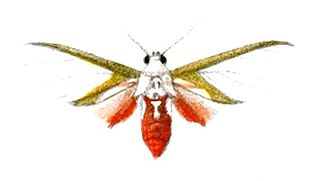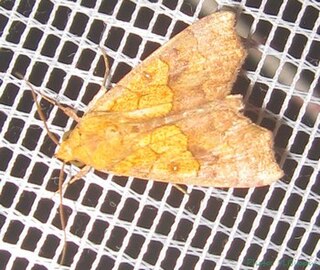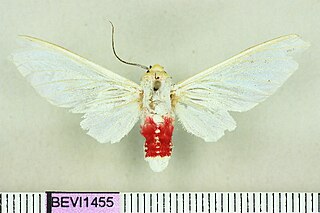
Eupseudosoma is a genus of moths in the family Erebidae. The genus was erected by Augustus Radcliffe Grote in 1865. The best known and most widespread species is Eupseudosoma involutum, the snowy eupseudosoma, a bright white moth which is found from the southern United States right down to the south of South America. There are a few other species found across the Americas.

The Arctiini are a tribe of tiger moths in the family Erebidae.

Amastus is a genus of moths in the family Erebidae. The genus was erected by Francis Walker in 1855.

Eucereon is a genus of tiger moths in the family Erebidae. The genus was erected by Jacob Hübner in 1819.

Leptarctia is a monotypic tiger moth genus in the family Erebidae described by Stretch in 1872. Its only species, Leptarctia californiae, was described by Francis Walker in 1855. It is found in western North America, from New Mexico and Colorado to California and north to British Columbia. The habitat consists of open forests, meadows and clearings in the mountains.

Leucanopsis is a genus of moths in the family Erebidae. The genus was described by Alfredo Rei do Régo Barros in 1956.

Lophocampa is a genus of moths in the family Erebidae. The genus was erected by Thaddeus William Harris in 1841. It contains around 75 species.

Trichromia is a genus of moths in the family Erebidae erected by Jacob Hübner in 1819. The members of this genus are largely indigenous to South America.

Anomis is a genus of moths in the family Erebidae.

Eugonobapta is a monotypic moth genus in the family Geometridae described by Warren in 1894. Its only species, Eugonobapta nivosaria, the snowy geometer, was first described by Achille Guenée in 1857. It is found in North America from Manitoba to New Brunswick, south to North Carolina and Tennessee.
Xenomigia involuta is a moth of the family Notodontidae. It is endemic to cloud forests on the western slope of the Ecuadorian Andes.

Cerconota is a genus of moths in the family Depressariidae. In 1991, I. W. B. Nye and David Stephen Fletcher included it in the family Oecophoridae and the subfamily Stenomatinae. It was later placed in the family Elachistidae and subfamily Stenomatinae by Ronald W. Hodges, in Niels Peder Kristensen (1999). Other classifications placed them in the Elachistidae or Oecophoridae, but they actually seem to belong to the Depressariidae.
Calidota strigosa, the streaked calidota moth, is a moth of the family Erebidae. It was described by Francis Walker in 1855. It is found on the Antilles and from the southern United States to Central America.
Eupseudosoma aberrans is a moth of the family Erebidae first described by William Schaus in 1905. It is found in Mexico.

Eupseudosoma grandis is a moth of the family Erebidae first described by Walter Rothschild in 1909. It is found in Peru.

Eupseudosoma larissa is a moth of the family Erebidae first described by Herbert Druce in 1890. It is found in the Amazon region.
Syllepte trizonalis is a moth species in the family Crambidae. It was described by Sepp in 1855. It is found in Indonesia (Sumatra).
Phthorimaea involuta is a moth in the family Gelechiidae. It was described by Edward Meyrick in 1917. It is found in Guyana.











